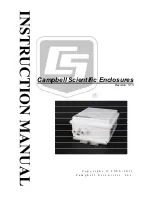
26
Modem:
A modem is an item of network hardware that forms a
bridge between the network and the internet - usually via
a broadband connection through telephone lines.
MP3:
MP3 was the original audio data compression algorithm
that made practical the transmission of audio files over the
internet and their playback on portable audio hardware
products with limited storage capacity.
Naim Extended Music Database:
Thanks to the HDX-SSD’s use of the
AMG
database, it
is able to access significantly more information than
competing products. This means selection and searching
for specific items can be more intuitive and productive.
NaimNet:
NaimNet
network
enabled audio products are
manufactured in the UK by Naim Audio. Like their closely
related non-network Naim products, they represent the
ultimate in musical performance.
Network:
A network in terms of this manual is a group of
interconnected and communicating servers, computers,
or peripheral devices that are able automatically to share
and control large volumes of data at high speeds.
Network Attached Storage (NAS):
Network Attached Storage refers to a stand-alone external
hard disk drive connected to the network.
Network Share:
A Network Share is a network attached storage location
from which the HDX-SSD can playback audio. A Network
Share may be a NAS hard disk (see above) or a shared
folder on a computer.
Music Store:
A Music Store is a storage location where HDX-SSD stores
ripped CD data.
Playlist:
A playlist is a specific group of tracks collected together for
a specific purpose; “favourites” perhaps, or “party tracks”.
A simple list of tracks queued-up to play (the tracks of an
album for instance) may also be referred to as a playlist.
RAID (Redundant Array of Independent Disks):
RAID storage incorporates multiple hard disk drives into
a single element. Data stored in a RAID is divided and
replicated among the drives to improve reliability and, in
some cases, read and write speeds.
Ripping:
Ripping is the slang term for extracting and storing the
audio data from a CD. The HDX-SSD is unusual in ripping
the audio data repeatedly to minimise errors. There are
some copyright and legal issues to consider when ripping
CDs.
Supplement – Hard Disk Player Ter minology
Router:
A router is an item of network hardware that controls
network
traffic. Many home network routers include a
broadband
modem
to connect the network to the
internet
and many also include a wireless element that enables
network hardware with wireless capabilities to connect.
Server:
Server is a generic term that describes an item of network
hardware that stores and provides data to the network.
Shuffle:
Shuffle is a term used to describe the random playback of
tracks.
S/PDIF:
S/PDIF (Sony/Philips Digital Interconnect Format) is a digital
audio interface format commonly used in domestic digital
audio equipment.
SSD:
SSD is short for Solid State Drive.
StreamNet:
StreamNet is a proprietary network technology that
enables synchronous and very high quality streaming of
audio and video over TCP/IP networks. The HDX-SSD and
all NaimNet products are StreamNet compatible.
TCP/IP:
TCP/IP (Transmission Control Protocol/Internet Protocol) is
the communications protocol on which the
internet
and
many other networks are based.
User Interface (UI):
Different user interfaces are available with the HDX-SSD
depending on the model and mode of use. See Section
1.2.
UPnP™:
UPnP™ (Universal Plug and Play) is network connection
standard that enables compatible hardware to connect
automatically and to simplify the implementation of home
networks.
USB:
USB (Universal Serial Bus) is a computer interface format
developed to enable simple connection of computer
peripheral devices.
WAV:
WAV (Waveform Audio Format) is a Microsoft/IBM audio file
format for storing and transferring audio on PCs. WAV is a
“lossless” file format.
Web Page:
A web page is a computer screen full of data output by
a
network
device that communicates information on its
status and may enable control via a mouse and keyboard.
WMA:
WMA (Windows Media Audio) is an audio data
compression technology developed by Microsoft. The
name can refer to both the audio file format and the
audio compression technique itself.



































